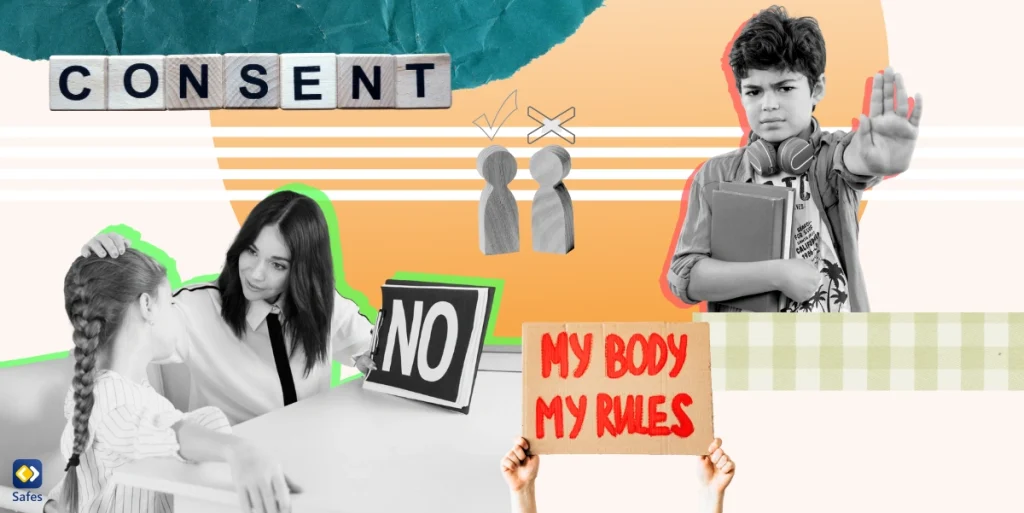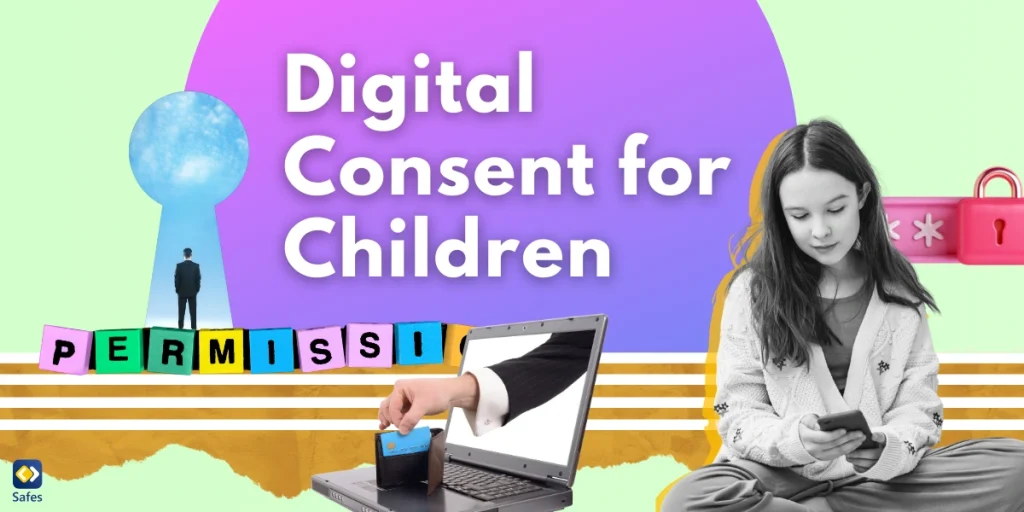Teaching consent is crucial to raising empowered and empathetic children who understand the importance of setting boundaries and respecting others. Consent is agreeing to something or giving permission, vital in children’s relationships and interactions. Educating your child about consent from an early age can help create a future with less sexual assault and promote healthy relationships based on mutual respect and autonomy.
Download and Start Your Free Trial of the Safes Parental Control App
The Meaning and Importance of Consent
Consent is not limited to sexual activity; it extends to all aspects of your child’s life. It involves giving someone a choice about touch or actions and respecting their answer. Teaching your child about consent in early childhood empowers them to confidently make decisions about their bodies and recognize the importance of setting boundaries and respecting others’ boundaries.
Body Autonomy: Enabling Children to Make Choices
One essential aspect of teaching consent is promoting body autonomy. Body autonomy means recognizing that each person has control over their own body and can decide what happens to them. Instilling a sense of body autonomy in your child enables them to assert their boundaries and choose how they interact with others.
Asking for Permission and Encouraging Empathy
Teaching children to ask for permission before touching or embracing others is a fundamental aspect of consent education. By teaching consent activities like using language such as “Let’s ask Joe if he would like to hug bye-bye,” you can help your child understand the importance of respecting others’ boundaries.
Additionally, building empathy within children is essential. You can explain how your child’s actions may have hurt someone else and encourage them to imagine how they would feel if the situation were reversed. This consent teaching activity cultivates empathy and helps your child understand the impact of their actions on others.
Recognizing Unwanted Touch and Encouraging Communication
Children need to know that “no” and “stop” are important words to be honored. You should teach your child that when they hear “no,” they must immediately stop whatever they are doing. Similarly, they should understand that their own “no’s” should also be respected by their friends. If someone doesn’t honor their boundaries, they should consider whether they feel safe and comfortable continuing the relationship.
You can also encourage your child to read facial expressions and body language, helping them identify emotions such as fear, happiness, sadness, and anger. This skill enables your child to recognize when someone may be uncomfortable or in distress.

Tailoring Consent Discussions to Different Age Groups
Teaching consent is an ongoing process that evolves as children grow. Tailoring consent discussions to different age groups ensures that children receive age-appropriate information and guidance.
Early Childhood (Ages 1-5)
In early childhood, you can introduce the concept of consent through simple activities and language. Teaching children to ask for permission before touching others and respecting their answers helps establish the foundation of consent. You can also build empathy in your little one by explaining how their actions may have hurt someone and asking them to imagine how they would feel in a similar situation.
Grade School (Ages 5-12)
As children enter grade school, you can continue reinforcing the importance of consent and respect for boundaries. You should discuss the natural changes your child’s body goes through during puberty and create a safe space for open conversations about these changes. Teaching children how to use safewords during play and helping them negotiate safewords with friends promotes consent and communication in their interactions.
Teens and Young Adults
As children transition into adolescence and young adulthood, consent discussions become more direct and focused on sexual consent. You should address topics such as affirmative consent, recognizing and respecting personal boundaries, and the influence of alcohol and drugs on consent. Openly discussing media portrayals of consent and encouraging critical thinking can help teens navigate complex situations.
Leading by Example: Demonstrating Consent and Respect
As a parent, you play a key role in shaping your child’s views on consent. So, you must lead by example and demonstrate consent and respect in your relationships and interactions. By modeling healthy boundaries, asking for permission, and respecting others’ boundaries, you can show your child the importance of consent in everyday life.
Consent in the Digital Age: Online Boundaries and Privacy
Today, teaching consent extends to online interactions and privacy. You should discuss the importance of setting boundaries in the digital world, such as not sharing personal information with strangers and understanding the implications of posting photos or videos online. Introducing parental control apps like Safes can help you navigate the challenges of ensuring online consent and privacy for your child.
Safes parental control app offers a comprehensive solution for you to protect your child’s digital privacy and promote healthy online habits. With features like content filtering, screen time management, and real-time monitoring, Safes empowers you to provide a safe digital environment for your child while respecting their boundaries and consent.
You’re welcome to download Safes from our website or Google Play and App Store. Safes is compatible with all devices and platforms. Start your free trial with Safes and see the benefits firsthand.
Creating a Safe Space for Consent Discussions
To facilitate open conversations about consent, you should create a safe and non-judgmental space for your child to ask questions and share their thoughts. Encourage your child to talk about their bodies without shame and use age-appropriate language to help normalize discussions about consent and physical boundaries.
You should be prepared to answer your child’s questions honestly and seek additional information if needed. If you are unsure of how to respond to a particular question, you can let your child know they will research the topic and follow up with them later. This approach shows your child that their questions are valued and encourages ongoing dialogue.
Use these resources to answer your child’s questions about consent if you’re unsure how to respond to their questions:
- Teaching Consent – Safe Secure Kids
- Consent: Talking With Children & Teens
- The Healthy Sex Talk: Teaching Kids Consent, Ages 1-21
In Conclusion: The Importance of Teaching Consent to Children
Teaching consent is a vital aspect of raising empowered and empathetic children. By starting conversations about consent from early childhood and tailoring discussions to different age groups, you can equip your child with the knowledge and skills to navigate relationships with respect and autonomy. Leading by example, creating a safe space for open conversations, and addressing consent in the digital age are essential components of teaching consent effectively. With the proper guidance and support, you can help shape a future with less rape and sexual assault, where consent and respect are the foundation of healthy relationships.
Your Child’s Online Safety Starts Here
Every parent today needs a solution to manage screen time and keep their child safe online.
Without the right tools, digital risks and excessive screen time can impact children's well-being. Safes helps parents set healthy boundaries, monitor activity, and protect kids from online dangers—all with an easy-to-use app.
Take control of your child’s digital world. Learn more about Safes or download the app to start your free trial today!




